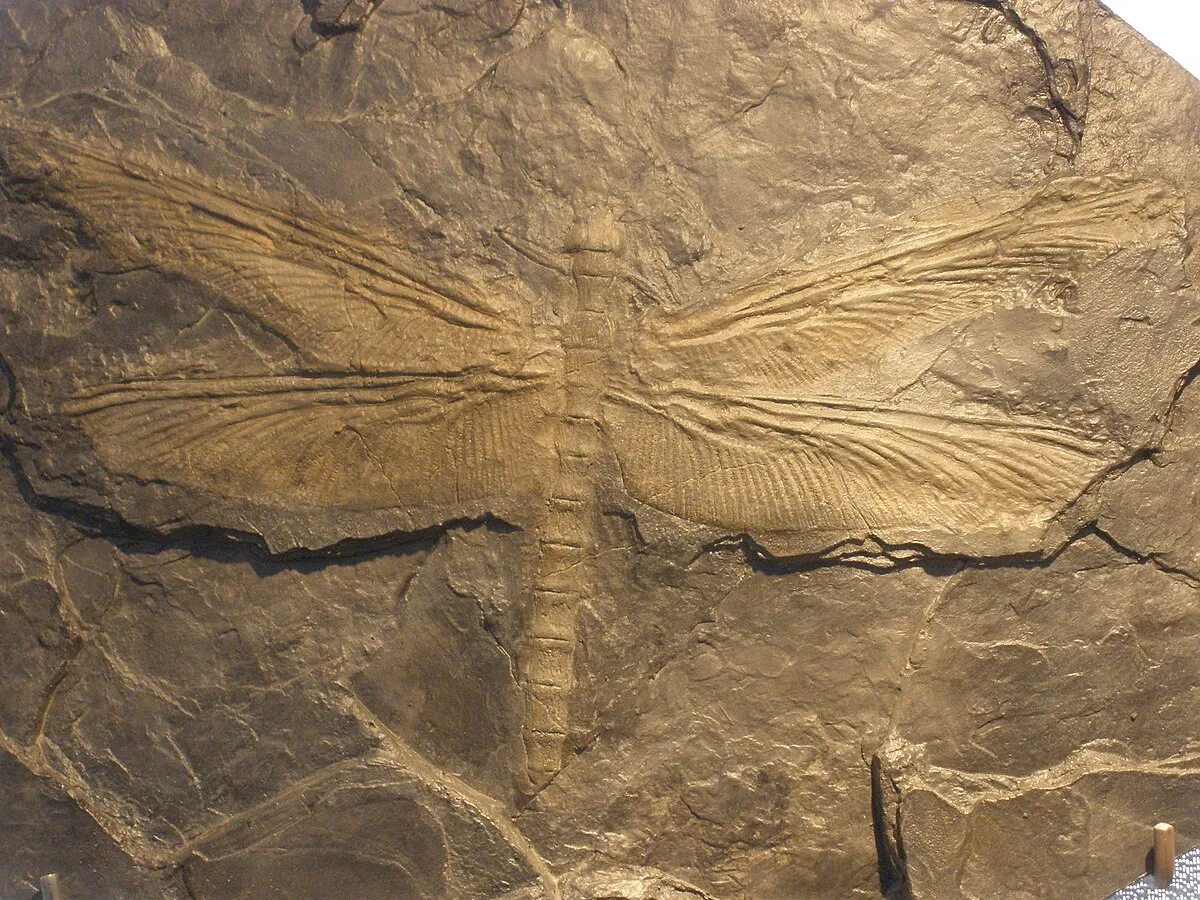Dragonfly fossil, 250-300 million years ago with 2 ft. wingspan.
Roughly 250 to 300 million years ago, long before the rise of dinosaurs, Earth was a vastly different place. Towering ferns and ancient trees dominated dense swampy forests. In the skies above, it wasn’t birds or bats that ruled the air—it was giant insects, unlike anything we see today. Among the most impressive of these ancient fliers was a dragonfly-like creature with an astonishing wingspan of up to 2 feet (over 60 cm).

While often compared to modern dragonflies, this prehistoric giant belonged to a different group called Meganeura. These enormous flying insects lived during the Late Carboniferous and Early Permian periods, a time over 100 million years before the first dinosaurs appeared.
Meganeura had a body length of up to 30 cm and a wingspan that rivaled many modern birds. Its appearance was remarkably similar to today’s dragonflies, but its role in the ecosystem was entirely different. Meganeura was a top aerial predator, feeding on smaller insects and possibly even tiny vertebrates, dominating the prehistoric skies.

The question of how insects like Meganeura could grow so large has intrigued scientists for decades. One leading theory is that during this time, the Earth’s atmosphere contained significantly more oxygen—around 30-35% compared to today’s 21%. This higher oxygen level would have allowed insects, which breathe through a network of small air tubes rather than lungs, to support much larger body sizes.
Additionally, the absence of aerial vertebrate predators like birds or bats meant there was less competition and fewer threats, giving these giants the freedom to evolve without constraints from natural enemies above.
The first fossil of Meganeura was discovered in France in the late 19th century. Since then, other remarkably preserved specimens have been found in ancient sedimentary rocks, revealing intricate details of their wings and bodies.

One of the most striking features is their wings—delicate, lace-like structures with a complex network of veins. These wings weren’t just for show. Their design suggests powerful flight capabilities, agility, and precision—perfectly suited for navigating through dense prehistoric forests and hunting on the wing.
Fossils like that of Meganeura are not just fascinating relics of the past—they help scientists understand the limits of biological life and how dramatically Earth’s ecosystems can change. They raise questions such as: Why don’t insects grow this large anymore? Could they ever return to such sizes if environmental conditions changed?
They also remind us that the dominance of vertebrates in the air today wasn’t always the case. For millions of years, the skies were ruled by creatures with chitinous exoskeletons and massive wingspans—creatures that today seem almost impossible.
The Meganeura fossil is more than just a well-preserved remnant—it’s a symbol of Earth’s deep past, where evolution took forms we struggle to imagine today. With its 2-foot wingspan and silent mastery of the air, this ancient insect tells a story of a world where giants once flew, and where nature experimented with size, form, and function in ways we are only beginning to understand.
As we study these fossils, we don’t just look into the past—we reflect on the dynamic, ever-changing nature of life on our planet.







